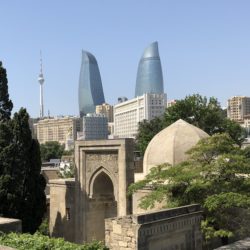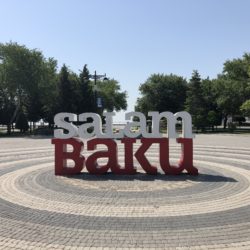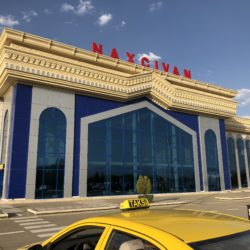
Qala to Mərdəkan
(Before reading this post, make sure you check out Part I and Part II of my trek around the Abşeron.)
By this point in the day I couldn’t drink water fast enough to counteract the amount of sweat streaming out of my pores, and my stomach was starting to rumble with ever increasing might. It was fortuitous then that the Bus 182 stop to Mərdəkan was located at a convenient store/market outside the main entrance of the Qala Archeological and Ethnographic Museum Complex.
I was instructed to exit the grounds and return to the main street that connected to the highway I rode in on. There I would find a market; just speak with the cashier and he or she would show me where to wait. Of course, there were no fewer than three markets along the street(!), but fate guided me where to go- for just as I was trying to decide which market to approach, a delivery truck laden with fresh bread pulled up to the second market, which ended up being the correct stop.
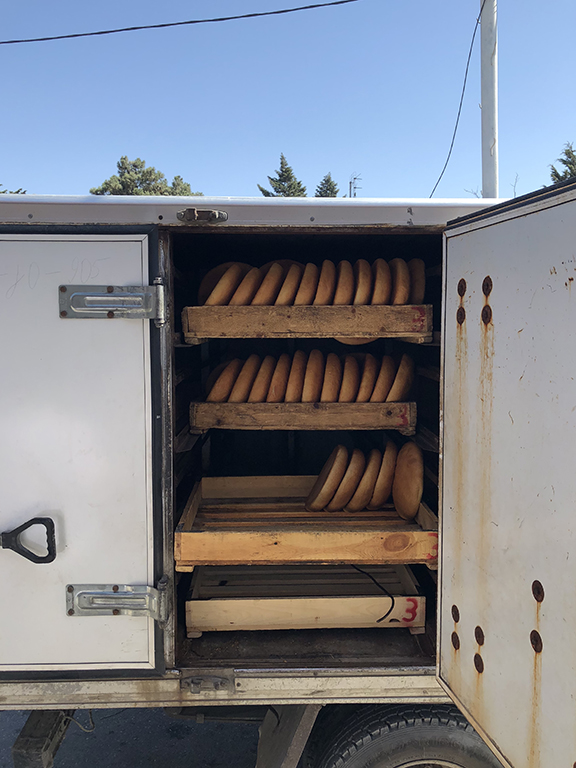
It took about 30 minutes for another 182 to show up, which gave me just enough time to eat some bread and cool down with a Gatorade under the market’s front porch. I really can’t stress enough the importance of staying hydrated in the Abşeron, especially if you’re not used to a desert climate like this.
Finally, I was on my way to Mərdəkan, which is one of the larger cities on the peninsula and home to several popular beaches along the Caspian Sea. Not being much for lazing around on the sand, my first stop would be the Mərdəkan Dendrary, followed by two historic mosques and a 14th-Century Castle.
Azərbaycan Milli Elmlər Akademiyasının Dendrologiya İnstitutunun (Azerbaijan National Academy of Sciences Dendrology Institute)
Bus 182 terminates right in front of the Mərdəkan Dendrary (Arboretum), although the entrance is not on the main road, but on a side street a little past the edge of the park. The gardens were originally built and owned by Azerbaijani oil millionaire, Murtuza Mukhtarov. Born in 1857, Mukhtarov was a great innovator who created the patented “Baku Drilling System,” as well as building dynamic electrical systems to power villages in the Abşeron. In 1895, work was completed on the Dendrary, which he willed to the state upon his death in 1920; it was later opened for public viewing in the 1960s.
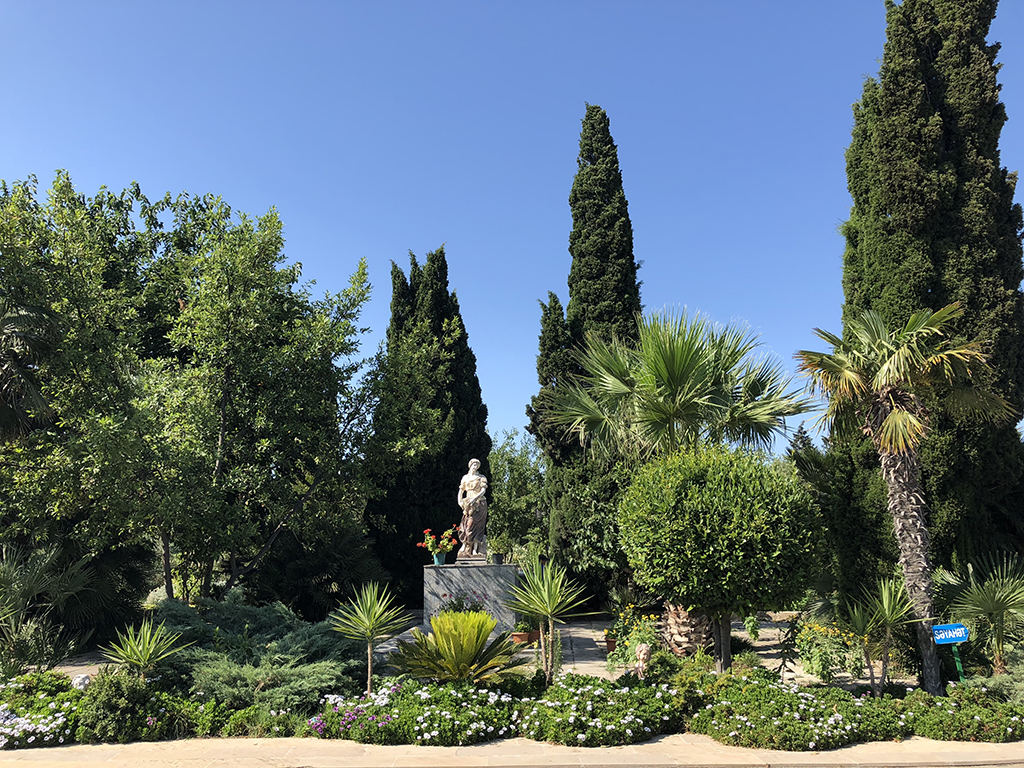
Technically a Dendrary is a collection of trees and bushes, but over the years hothouses for flowers have been added to the 2000 species of plant life found on the grounds. There is also a lake with paddleboats, a restaurant and an outdoor bird exhibit.
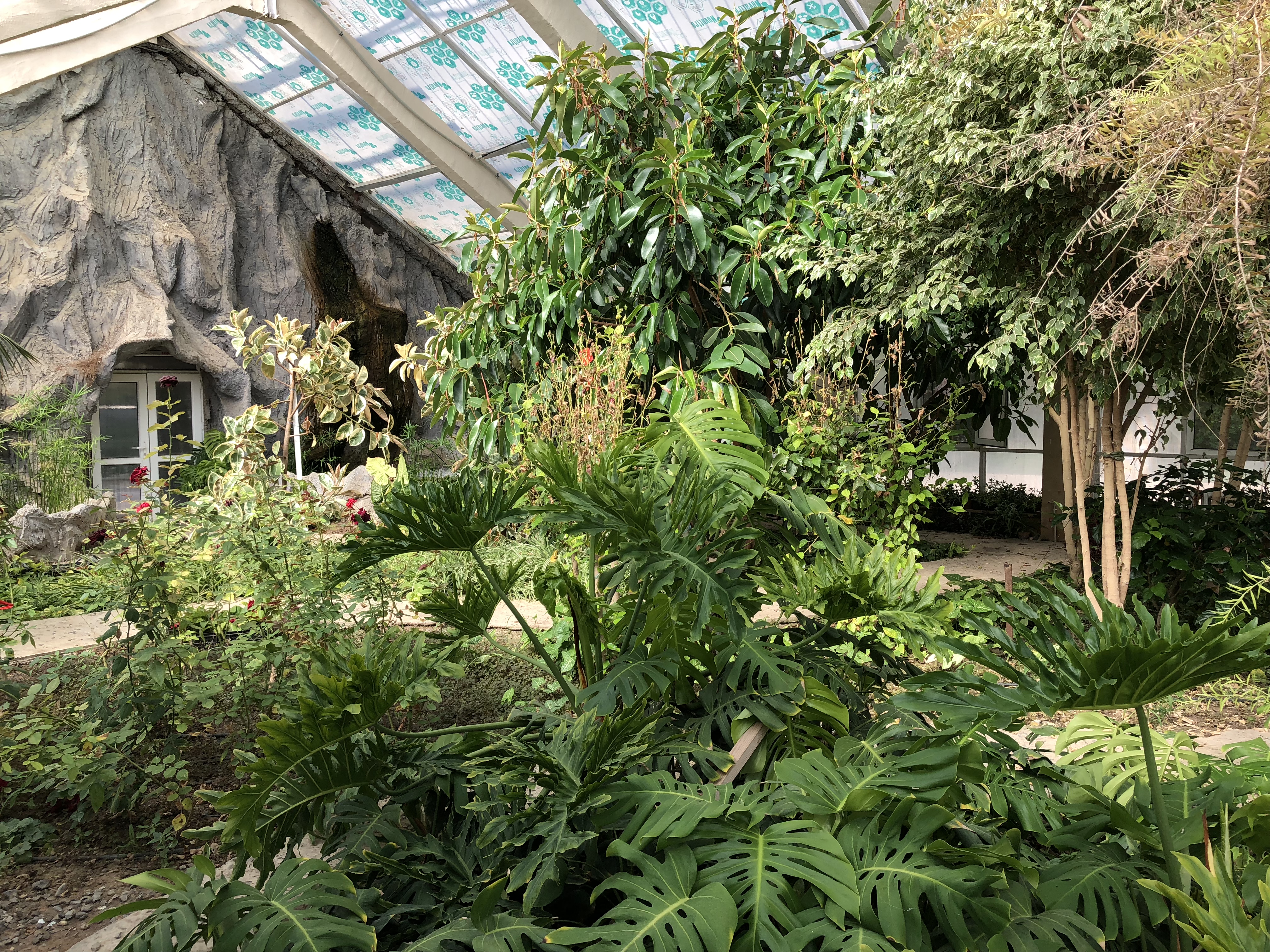

Pir Həsən Məscidi and Heydər Cümə Məscidi
The Pir Həsən Məscidi is a 16th-Century mosque with a beautiful surrounding garden; the latter is home to the burial sites of several important 19th-Century Azerbaijani religious and political figures. Pir Həsən is also known for its tradition of smashing bottles of sacred water over someone’s head to cure nervousness, though I did not witness this during my visit.

Heydər Cümə Məscidi is not as ancient as Pir Həsən, having been built in 1893, but it is no less impressive; the interiors are gorgeous thanks to some restoration work sponsored by the government in 2013.
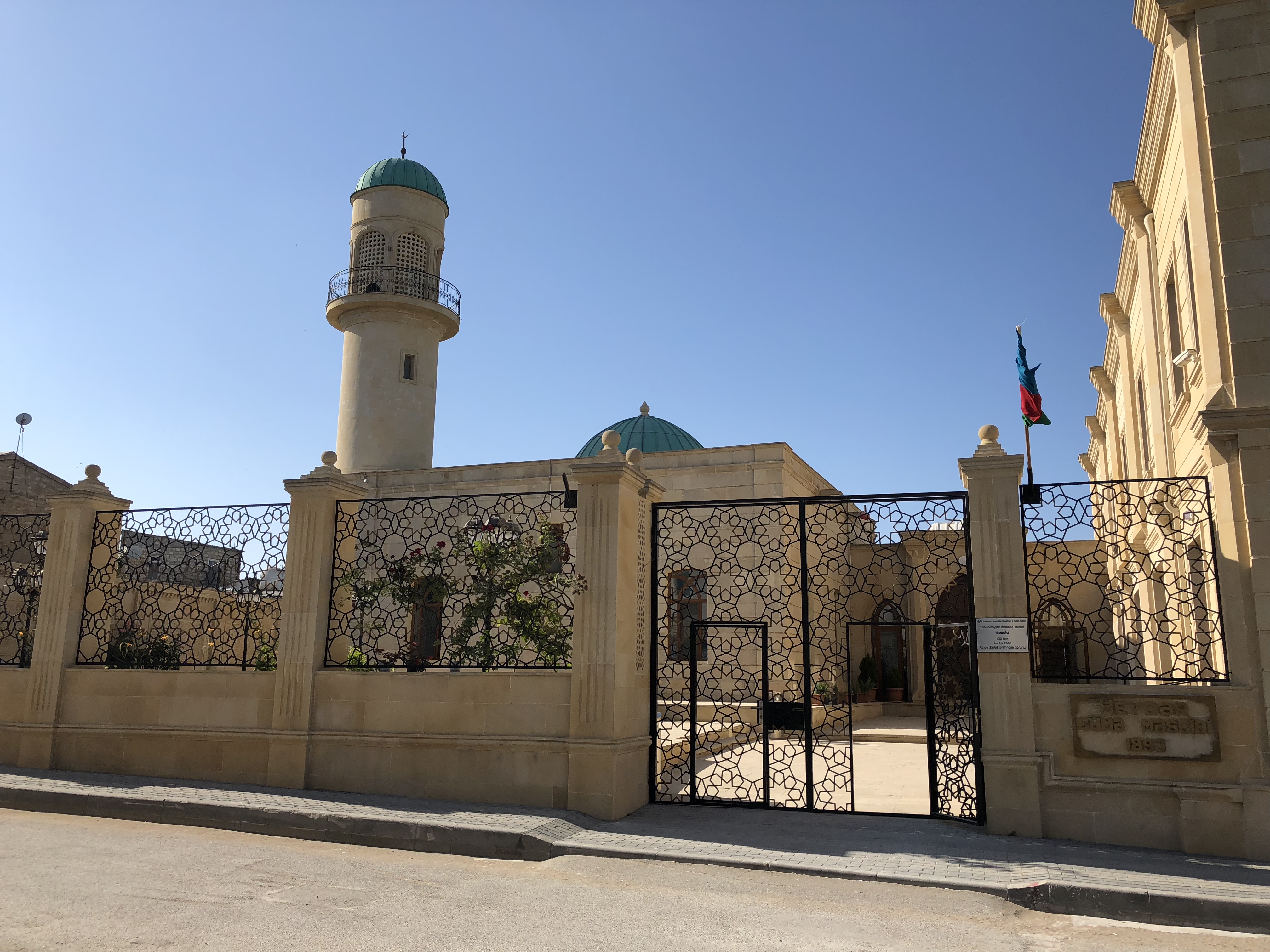
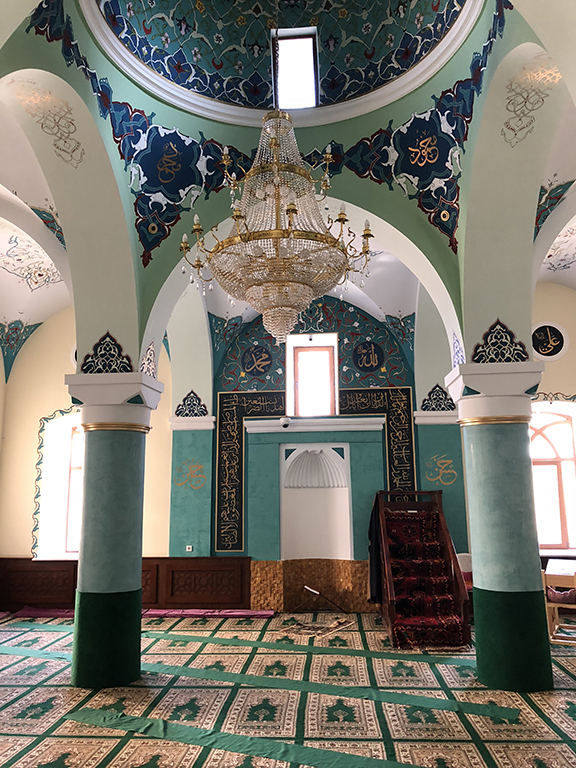
Mərdəkan Qalaşı
There are two castles in Mərdəkan, but the dördkünc or quadrangular castle is the one worth visiting. Built during the 14th-Century, it served as a defensive structure and observation facility; its 72-foot tower allows one to see all the way to Baku city in the west and to the Caspian Sea in the north and east. A series of wells were built around the castle, creating a fresh water supply for Mərdəkan.
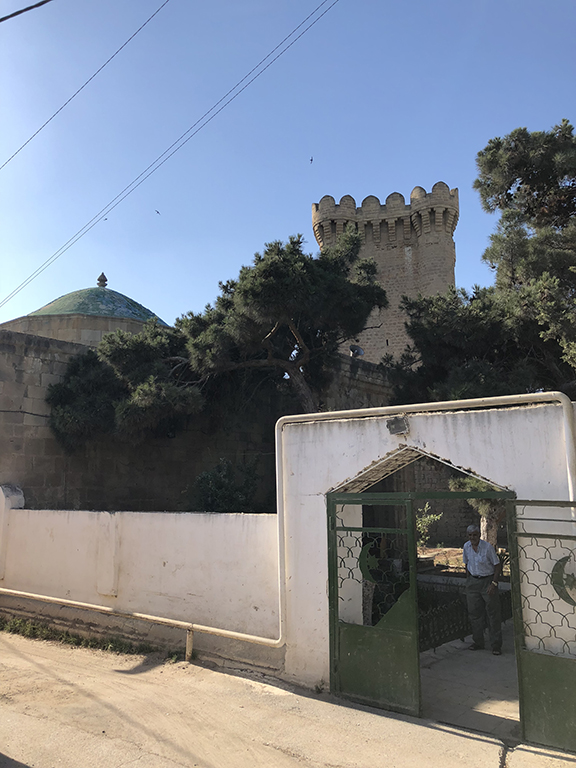
When you enter the castle, a groundskeeper will give you a little tour (in English) and allow you to climb the tower for a few Manats. It’s a bit of a challenge ascending the stairs inside the tower: there are no handrails or lighting and each stair is an irregular shape. I used the flashlight on my phone to help guide me, but below you can see the difference between the flashlight and without. It got a little spooky in the middle there for me!

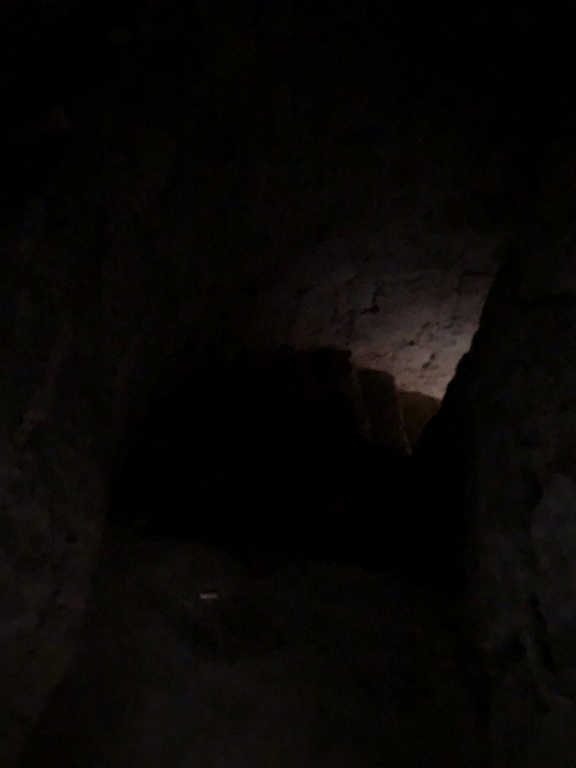
Any trepidation I felt climbing the stairs vanished when I reached the viewing platform at the top. The breeze was cool and the sky was clear enough for me to see Baku city in the distance. I probably could have squeezed in one more stop on my Abşeron adventure, but this seemed like a nice way to end my day before heading back into the capital.
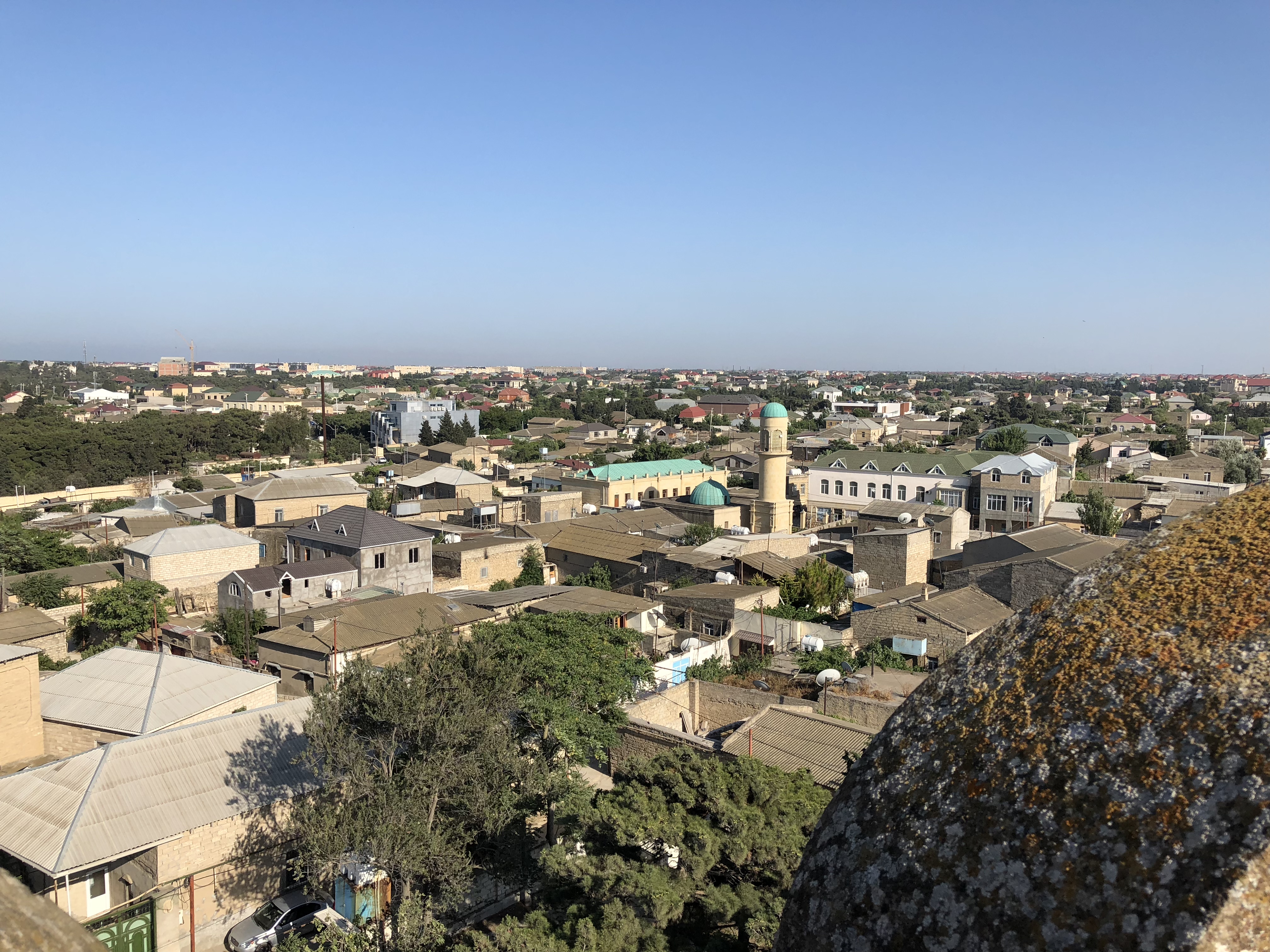
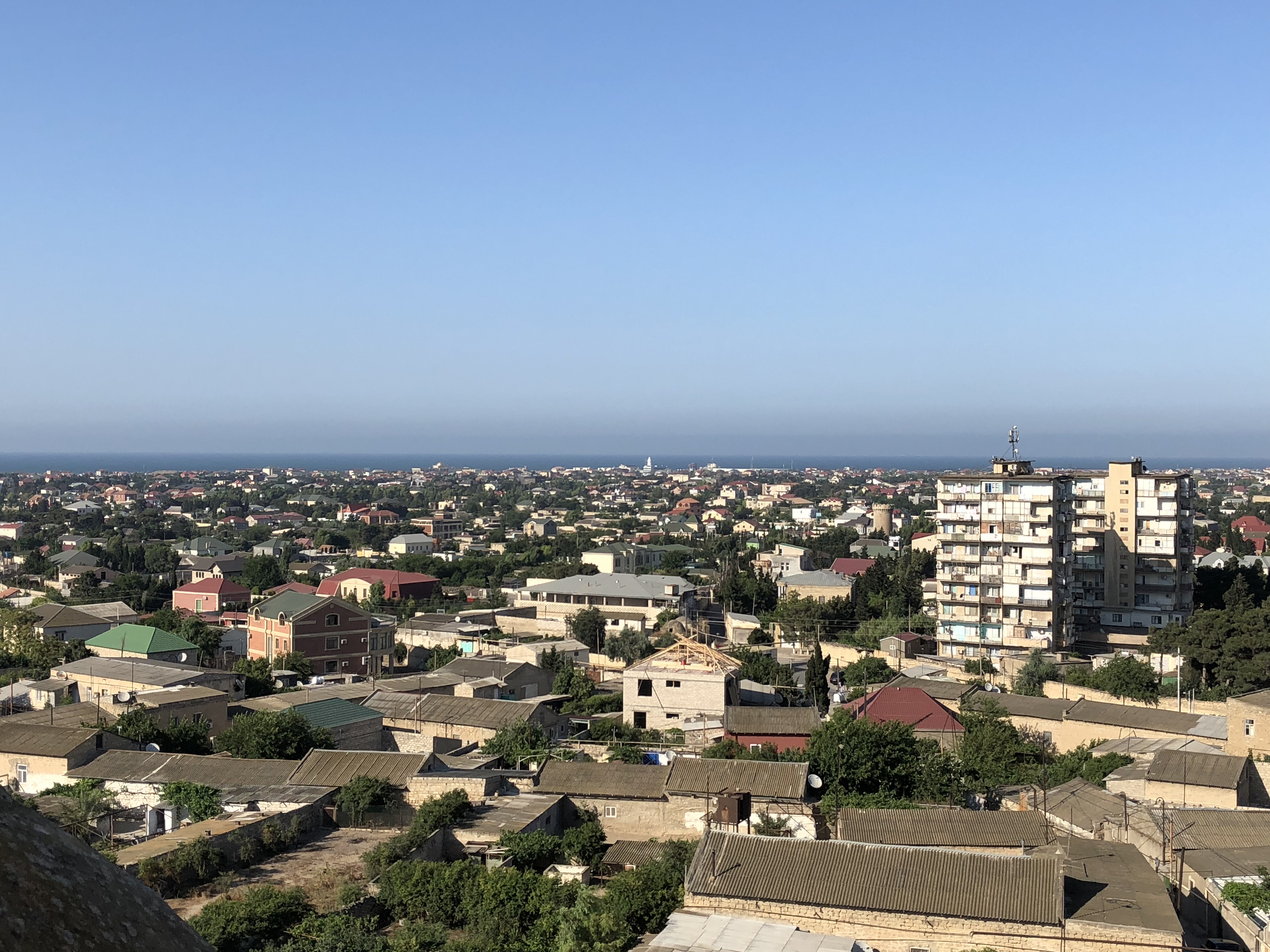
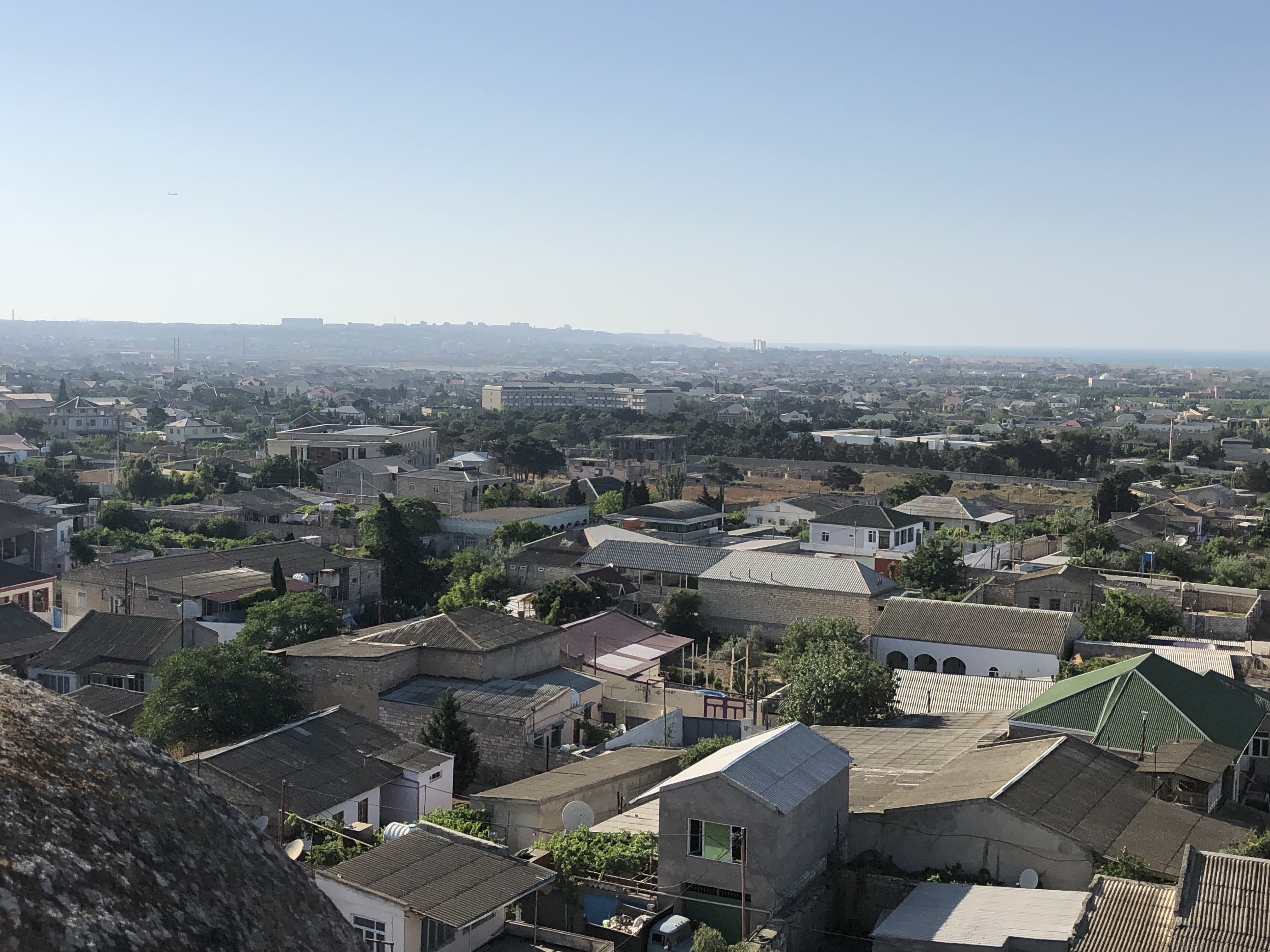
In order to get back to Baku, I returned to the main road where Bus 182 had dropped me off and hopped on Bus 136, which returned me to the start of my journey at the Koroğlu Metro. To note: by the end of the day, the driver on the 136 had almost completely run out of change, so be prepared to have some small coins handy or be ready to walk away making a small donation to the Baku transit system.
Not only was my time in the Abşeron one of my favorite day trips I’ve ever taken, but it really allowed me to test my mettle and see that I was more than equipped to handle a bus system far different from what I am used to. Travel, especially solo travel, should be just as much about self-discovery as it is about the far-flung destinations you are visiting. It’s ok to push yourself a little (or a lot) outside your comfort zone. The usual outcome is not failure, but rather an increase in what you know you’re capable of.
